20 Most Popular Types of Wine Grapes [Detailed Guide]
Learn about the different wine grape varieties that make the wines we love so much. We've spoken to the experts in the area so you don't have to!
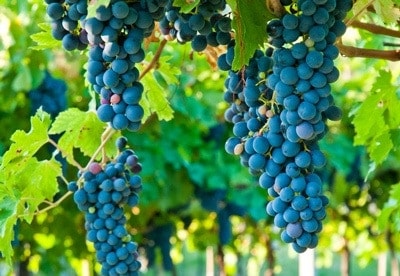
In our comprehensive guide to wine grapes we've included:
So sit down, open your favorite bottle of wine, and join us on a journey through the world of wine grapes.
Cabernet Franc
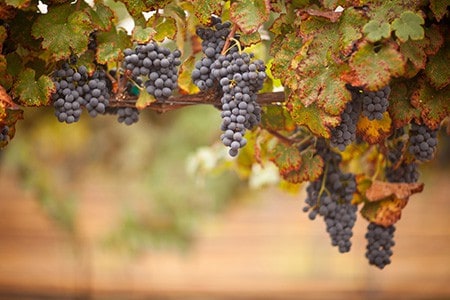
Introduction
Cabernet Franc is one of the major black wine grape varieties grown worldwide.
It is mainly grown to blend with Cabernet Sauvignon and Merlot in the Bordeaux style.
In some cases, like the Loire Valley’s Chinon, it is made into its own wine.
Key Characteristics
Grape's Origin
Its origin isn't clear but it is believed the grape is native to the Libournais region of southwest France.
It is thought that the grape was used in winemaking as early as the 17th century and that it was cut to be planted in the Loire Valley.
In Bordeaux, records go back to the the late 18th century although experts know it appeared in Loire prior to that.
Grape's Behavior
Cabernet Franc is early budding and hardy, allowing it to handle bad weather and to thrive in cool climates like the Loire Valley and Bordeaux.
Attention must be paid to it to avoid too large yields which can result in vegetal tasting wines. Though this is the case for most wine grape varieties.
The grape thrives in many types of sand but when planted in sandy or chalky soils it reaches its full flavor potential.
When blended with full red grapes it produces distinctive peppery notes.
How Does it Look and Taste?
Depending on how the grapes are used and whether the wine stands on its own or in a blend, when you open it, it is a bright pale red that blends well with more robust reds.
It can produce wines of the same intensity and richness as Cabernet Sauvignon but with a lighter color and a more fruit forward taste.
It tends to have raspberry, blackcurrant, violet and graphite aromas. There is a distinct vegetal note that can range in taste from leaves to green bell peppers.
It produces wines with a smooth mouthfeel. If harvesting is delayed the vegetal taste can be significantly reduced.
Top Production Areas
Cabernet Franc is grown worldwide with a high yield in the cooler climates in France. It is one of the twenty most commonly grown grapes.
It is found throughout Europe and the New World and in emerging regions like China and Kazakhstan. Much of the time it is planted to be part of Bordeaux-style blends like Meritage.
In these places it plays second fiddle to Cabernet Sauvignon and Merlot. It plays a more prominent role in northern Italy, Anjou-Saumur, Touraine and the right bank of Bordeaux both in blends and its own varietal.
Recommended Food Pairings
Bolder flavors are beautifully complemented so consider pairing with heavier, fatty meats especially those that are roasted or grilled.
On the lighter side it also pairs with salmon. Olives are an exceptional match, for example a tapenade spread on good bread.
Sauces made with mushrooms or olives pair beautifully. Consider pairing with pasta served with sauces with these items and spiced with rosemary, thyme or mint.
What do the Experts Say?
"Cabernet Franc, a grape that originated in France, produces one of my favorite, food-friendly wines.
It's one of the parent grapes of Cabernet Sauvignon and is often used to impart structure and spice to a Bordeaux-style blend.
However, as a standalone grape, it's floral, fruity, herbal, and spicy, with softer tannins than Cabernet Sauvignon and Merlot.
Aromas and flavors include black fruits, such as blackberry, blackcurrant, and plum, as well as herbs and spices.
Now it's grown around the world, including France, California, as well as the mid-Atlantic and Northeastern United States, where it has demonstrated that it can flourish in cooler climates."
Elizabeth @ TravelingWineChick.com
Cabernet Sauvignon
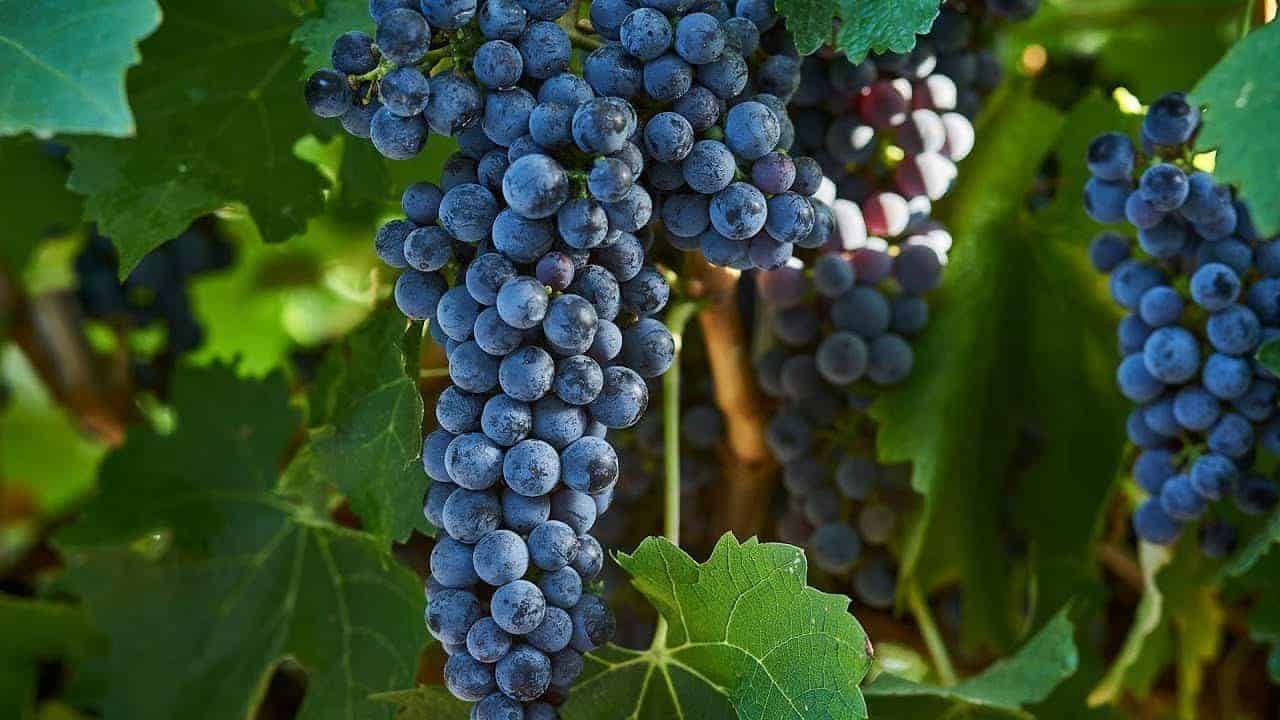
Introduction
Cabernet Sauvignon is one of the world’s most used and recognized red grape varieties.
For most of the 20th century it was the most planted grape in the world although it has since been passed by Merlot.
Its appeal stems from its ability to be grown in a wide range of climates.
Napa Valley and Bordeaux (the left bank) currently produce some of the world's best Cabernet Sauvignon. It makes a tannic wine that ages well.
Key Characteristics
Grape's Origin
The grape is, relatively speaking, a new one. It came into existence in the late 17th century in southwest France when Cabernet Franc and Sauvignon Blanc grapes were accidentally crossed.
Grape's Behavior
Cabernet Sauvignon is a hardy grape, resistant to rot and pests. It is also very low yielding.
The late budding of Cabernet Sauvignon can be advantageous and allows it to avoid frost. It can be grown in all climate regions where viticulture (wine-growing) takes place.
Its taste varies incredibly depending on where it is grown. In cooler climates it develops blackcurrant, green bell pepper, mint and cedar flavors.
While in warm climates it will produce a more jammy taste. In Australia, Cabernet Sauvignon often has a menthol quality.
Cabernet Sauvignon grapes do their best work in gravely soil.
How Does it Look and Taste?
Cabernet Sauvignon’s color, like its flavor, is highly variable. When grown in warm climates it is ruby-colored and nearly opaque. Cooler climate Cabernet Sauvignons will be more pale.
The taste and color of this particular wine will depend greatly on climate and the taste and palette of the winemaker.
The wines made in cooler climates will be paler and have a higher acidity whereas warm climate Cabernet Sauvignons are darker and more dense in flavor, with lower acidity too.
Cabernet Sauvignon’s flavor profile varies greatly between terroir and winemaking processes chosen by the winemaker.
Common aromas and tasting notes include dark fruits like blackcurrant, blackberry, plum and raisin.
It is complex with notes of chocolate, coffee, tobacco, earth and herb.
When barrelled in oak it presents oak, cedar, smoke, vanilla, spice and pepper notes on the nose.
Top Production Areas
Cabernet Sauvignon does not have one area - because it is the second most planted grape in the world. It can be found in pretty much any grape growing region.
Some critics of the grape classify it as a “colonizer” due to it replacing many indigenous vines. This is due to the ease of growing it and its resistance to common dangers like frost.
Recommended Food Pairings
Cabernet Sauvignon can be paired widely although it is best paired with more moderate flavors.
Strongly flavored food will compete with the wine as it is highly flavorful itself.
Rather than a straight rule for pairing, drinkers should consider the climate and style of the wine (since this particular wine varies so much according to growing region) and pair using similar wine profiles as a guide.
Fuller-bodied Cabernet Sauvignons always pair well with rare red meats.
What do the Experts Say?
"The best thing about Cabernet Sauvignon is its incredible versatility.
While not necessarily a wine that shows terroir, it does vary greatly from climate to climate, and there is a huge difference between cabs that are oaked in barrels, and those that are not.
There is something fascinating about a varietal that not only has such range but also learning that range and educating others about it."
Nancy @ couchandcork.comCarmenere
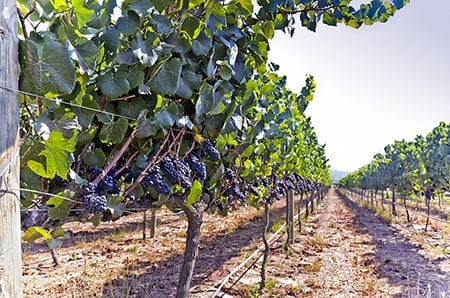
Introduction
Carménère, is Chile’s most popular type of wine grape. It was originally grown in France and is used to make deep, red wines.
It is a member of the Cabernet family and its name, which translates to “crimson” refers to the fall colors that abound during harvest.
Key Characteristics
Grape's Origin
While the grape’s origin is not definitively known, it does have some history in the Médoc region of Bordeaux as well as Graves.
Between oidium (a fungal spore that can devastate grape crops) and the 1867 outbreak of Phylloxera (The Great French Wine Blight) the grape all but disappeared from Europe. It was not widely replanted because it was nearly impossible to find.
The climate proved to be ripe for coulure, which stopped the buds from flowering. The grape quickly grew out of favor and was replaced by more suitable grapes.
Despite being wiped out in France, the grape is thriving elsewhere in the world, essentially by accident.
Chilean growers imported the grape from Bordeaux during the 19th century when it was often confused with Merlot.
Similarly, an Italian vineyard bought what they believed were Cabernet Franc vines in 1990 but learned soon that the grapes looked and tasted differently from Cabernet Franc grapes.
The grapes are also grown in the USA, specifically Washington State and California, as well as Australia and New Zealand.
Grape's Behavior
Carménère is a late ripening grape that can be difficult to grow.
It does best in moderate or warm climates but growers must be very careful of rain and irrigation toward harvest time.
Too much water at these times will increase the green pepper quality of the grapes producing far too vegetal of a taste.
The grapes are naturally high in sugar but the tannins take a while to develop. Therefore in too hot of a climate it is not unusual to end up with wines that are unbalanced with a very high alcohol content.
Carménère grows best on steep rocky slopes where the soil is layered with sand on top of clay. Volcanic soil is an excellent growing medium.
How Does it Look and Taste?
Carménère is rich in both color and flavor. The wines are inky, deep red or purple.
The tastes are layered and contain rich, earthy notes of leather, tar, and smoke; black pepper and vanilla; and intense fruit flavors like cherry, plum and berries.
Top Production Areas
Chile and Italy are top producers of the grape with Australia, New Zealand and Australia also producing a fair amount.
Recommended Food Pairings
Carménère is easy to pair with hearty foods. Consider chili, pork stews, barbecued prime ribs, Mexican mole sauces, curries, eggplant or enjoy it with Camembert cheese.
What do the Experts Say?
"What I enjoy most about Carmenere is its savory character. By that I am referring to (and stop me if I'm getting technical here) non-fruity flavors.
People love to pick on Carmenere for having green bell pepper notes, but the GBP overload is only in out-of-whack versions.
I really like green flavors in red wine, by the way. But red wines are like Kermit in that it ain't easy being green.
Also be on the lookout for some coffee and cocoa action, black pepper as well.
Carmenere's flavors run deep, like the opening bass line of "The Low End Theory". Paring-wise, pour yourself a glass alongside earthy food; just add mushrooms to any meat or starch."
Jameson @ Jamesonfink.com
Chardonnay
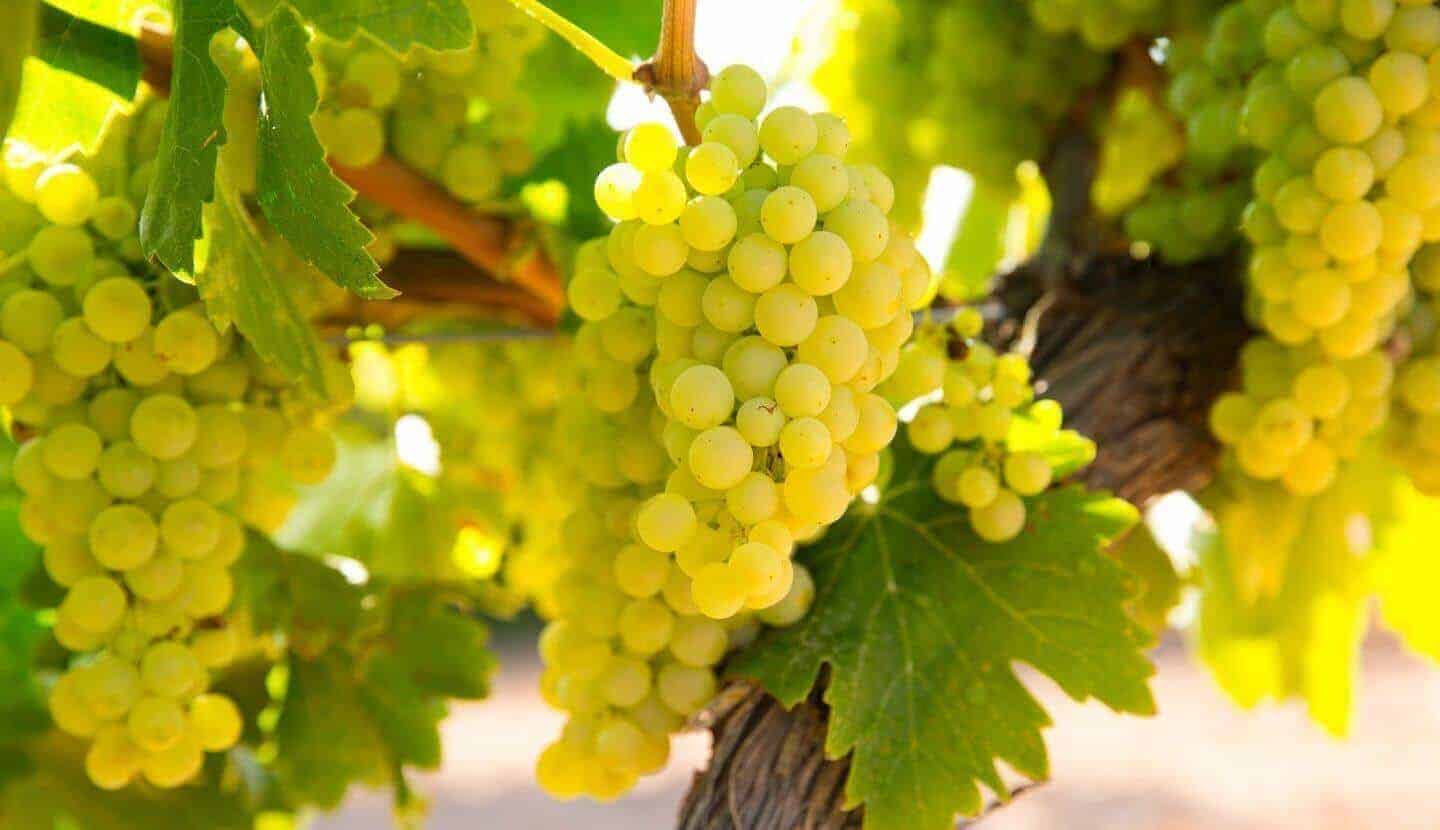
Introduction
Chardonnay is one of the major wine grape varieties grown worldwide.
It is also one of the most popular grapes for drinkers due to its mild flavor and also for winemakers to grow because it is relatively easy to care for compared to other grapes.
Key Characteristics
Grape's Origin
The Chardonnay wine grape originated in the Burgundy region of France.
There are many theories about its inception but the most accepted, based on DNA mapping, is that it is a cross between Pinot and Gouais Blanc.
It is likely that the Romans brought Gouais Blanc from Croatia to Eastern France where it was grown by peasants near where the French upper class grew Pinot, giving the two a chance to mingle.
Grape's Behavior
Chardonnay is is early budding but not extremely hardy therefore it is vulnerable to unexpected spring frosts.
Vineyards will prune the vines significantly prior to the buds blooming in order to delay harvest by a few weeks and miss any unexpected dips in temperature.
Because it has a short growing period it can be grown in nearly every climate. No matter where it is grown, it is susceptible to rot and must be minded carefully.
The grape thrives in many types of soil but prefers limestone, clay and chalk.
Related: Learn more about popular white wine grapes in our dedicated guide.
How Does it Look and Taste?
The color of Chardonnay varies with the unoaked versions being a pale, yellow-gold hue. Oak aged Chardonnays are a darker gold color.
“The lighter the body, the lighter the color” is a good rule of thumb with Chardonnays.
The taste of Chardonnay is equally versatile but alson it is fairly neutral.
Oaking and terroir can produce Chardonnays that taste of pear and apple or have sweet honey or vanilla notes.
Cool climate Chardonnays taste of green plum, apple and pear while those from a warm climate taste more of citrus, peach and melon.
In very warm temperatures the grapes give a tropical flavor to wine with the most common notes being those of fig, banana and mango.
Top Production Areas
Chardonnay is grown in all wine regions of the world and is one of the most commonly grown types of wine grape.
Recommended Food Pairings
Chardonnay is best paired with seafood - both fish and shellfish - poultry and pork.
A buttery Chardonnay goes best with spices like curry and tamarind while richer dishes are best eaten with a more acidic Chardonnay.
Because of the difference in Chardonnays, which swing from acidic citrusy wines to the more rounded tropical flavors, pairings are best when they offer a contrast in flavors with the food.
Consider seafood, poultry and pork flavored with tarragon, parsley, thyme, marjoram and lemon zest as well as semi-soft goat’s and cow’s milk cheeses when pairing a bottle of Chardonnay.
When pairing Chardonnays with oysters (a very good and common pairing) stick with unoaked Chardonnays.
What do the Experts Say?
"Chardonnay, like Chasselas, Pinot Blanc and more of those grapes is actually pretty neutral and boring except when grown (organic/biodynamic) on a great terroir which gives it its complexity and most primary aromas and/or when very well vinified, with bâtonnage (stirring) of the lees and potentially aged on oak.
Pairing a 'grape variety' or better said a 'varietal wine' with food is for me nonsense. A wine who has nothing to tell about where it comes from is not interesting me.
I never buy a chardonnay, I always buy an appellation, where ever it comes from, as long as it is a wine with its own character.
In the past, most 'new world' chardonnay did have the same heavy body, high alcohol, big structure and aromas (all coming from vinification and ageing in or with oak) while 'old world' chardonnay wines had more finesse, minerality, freshness and primary aromas.
Nowadays cool climates unoaked chardonnay from the 'new world' can have the same characteristics as the real 'terroir' driven 'old world' chardonnay wines, while a big amount of 'old world made old new world style' big bastards chardonnay are simply as boring as the blockbusters of 30 years ago in the 'new world'."
Christian @ ChristianCallec.com
Gewurztraminer
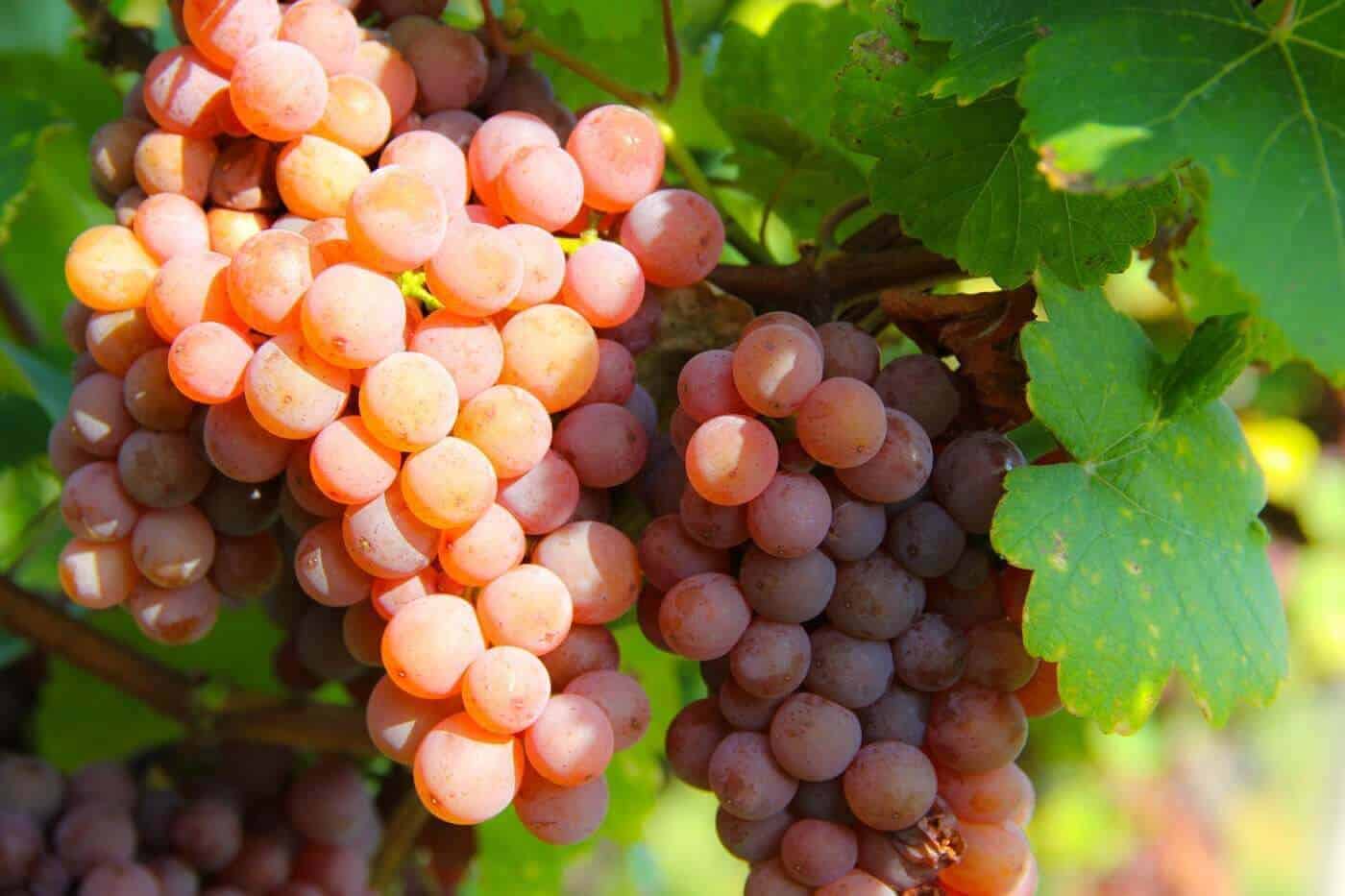
Introduction
Gewürztraminer is a rose-colored, aromatic grape used in off-dry white wines with a distinct smell of lychee.
The grape is a mutation of Sauvignon blanc (also called “Traminer” in northern Italy) and its name translates to sweet or perfumed Traminer.
Key Characteristics
Grape's Origin
Because it's a mutation, it's difficult to tie down the exact origin of Gewürztraminer.
Traminer is an ancient grape that was named after the German-speaking village in Italy, Tramin.
It is believed to be a twin of Sauvignon Blanc, from which Gewürztraminer mutated.
Due to the spread of the grape, its genetic preference for mutation, and wars at the time having impact on viticulture, it is even more difficult to map the grape.
Grape's Behavior
Gewürztraminer is early budding and late ripening. If a grape could be as poorly behaved as possible, this would be it!
Gewürztraminer is unpredictable when it comes to ripening and is very particular about soil and climate.
The vines are fast to grow but also incredibly vulnerable to disease. Its early buds make it at risk of being damaged by frost. While it develops best in cool climates due to being high in sugar, it can grow in warm climates with much care.
It must be picked early in warm climates to keep its sweetness and acidity, but in doing so it loses much of its aromas. This is not ideal for an aromatic grape.
Gewürztraminer thrives in clay soil.
How Does it Look and Taste?
Gewürztraminer is a deep gold color, in part due to its dark skin.
Aromas include lychee, with which it shares many of the same compounds, rose petal, ginger, grapefruit and burnt incense.
Its flavors are fruity and floral with notes of pineapple, citrus and stone fruits.
Top Production Areas
Despite the difficulty of growing Gewürztraminer, it can be found in the Alsace area of France, Germany, Northeast Italy, Switzerland, Southern Australia, New Zealand, Switzerland, the USA, and Canada.
Recommended Food Pairings
The sweetness of Gewürztraminer makes it a great match for Asian cuisine, German cheeses like Hirtenkäse and Münster, and wild game.
What do the Experts Say?
"Gewürztraminer is a great wine newbie’s grape. It’s so distinct, so gregarious in aromas.
Really, if sniffing a glass of Gewürztraminer doesn’t get you excited about wine well then perhaps it’s best to stick with the pilsner.
And while Gewürztraminer is best known as a wine from Alsace and Germany, it fares well in local vineyards too.
Sumac Ridge is a longtime proponent of this extroverted cultivar, and their latest vintage Gew gushes with apple and tropical aromas before leading to a rich, fruity finish.
It’s easy sipping but lacks a crisp counterpoint of conclusion, and is best served with Baja-style fried fish tacos or grilled chicken."
James Nevison @ TheProvince.com
Grenache
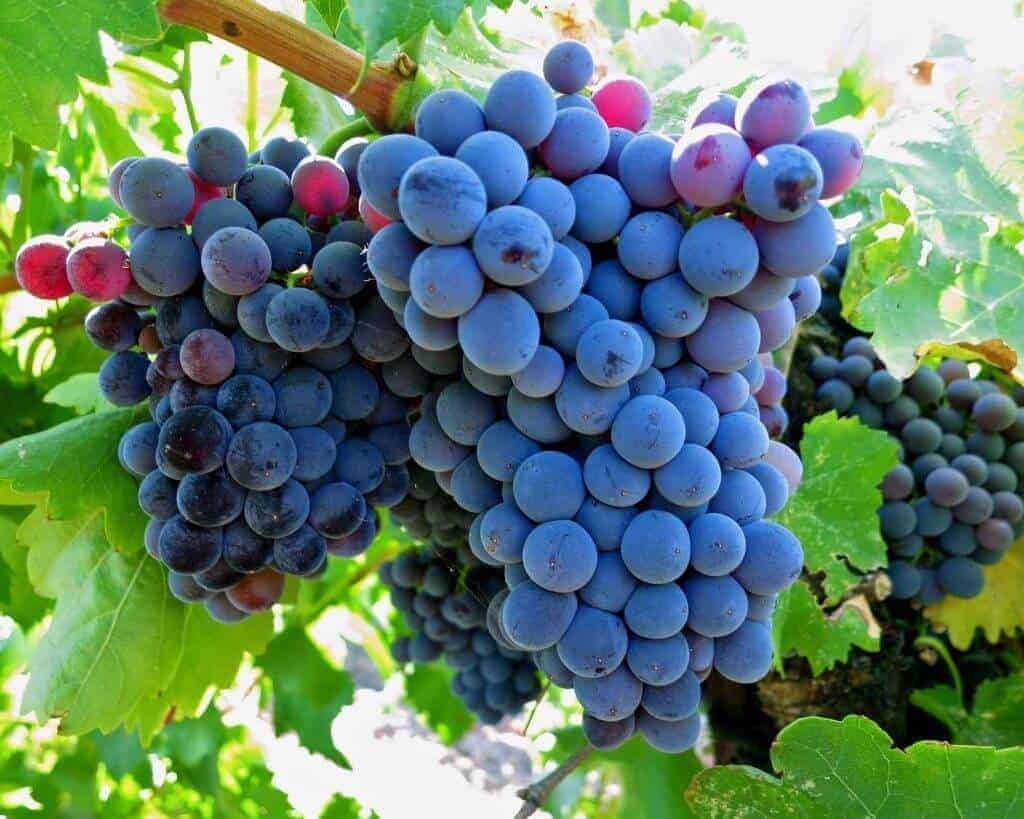
Introduction
Grenache is a black grape grown worldwide for use in red wines.
It is the most commonly used grape in Rhone red blends whereas in Spain it is usually made into its own grape.
It is one of the most grown red wine grape varieties in the world.
Key Characteristics
Grape's Origin
While not definitive, the grape is believed to have started in the Aragon region (northern Spain) based on ampelographic study.
This is further supported by the fact that an early name for the vine was Tinto Aragon. The grape likely spread to Catalonia and southern Spain - places where it is still grown today.
Grape's Behavior
Grenache is late-ripening so it is best grown in hot, dry climates, like those found in Spain, southern France and southern California.
The grape is extremely tolerant of heat and drought. Grenache is generally blended with bolder reds due to its lack of acid, tannin and color, however, Cannonau di Sardegna is required, under Sardinian D.O.C Law, to be 99% Grenache. Its light nature allows it to make excellent rosé.
When its yields are controlled it produces highly alcoholic, red fruit flavored wine with spicy white pepper notes. Grenache oxidizes easily and often browns, a quality known as “bricking”.
How Does it Look and Taste?
Grenache is pale, semi-translucent, fruity and sweet and often used to lighten and brighten heavier reds.
It has the tendency to brick, or turn brownish when exposed to oxygen.
Its aromas are that of sweet red fruits (candied) and spice like cinnamon and pepper.
Top Production Areas
Spain and France are top producers of the grape although rumor has it that China is starting to grow large amounts of Grenache.
Recommended Food Pairings
The high alcohol, sweetness and light spice of Grenache make it the perfect pair for spicy dishes.
Alcohol naturally breaks down capsaicin, the chemical that gives spicy food its heat, so the wine helps cut some of the heat.
What do the Experts Say?
"Grenache or Garnacha, as the Spanish like to call it, may be one of the most underrated as well as one of the most delightful grape varieties.
It goes from the Chateauneuf du Pape blend to the old vines of Spain or Australia, offering deep and intense flavors of dark fruit that can fascinate even the most skeptical palate!
Personally I have fallen in love with the earthy wilderness and juicy notes of the Australian ones few years ago, a love that is still very alive."
Alessandra @ WineHippie.Blogspot.com
Malbec
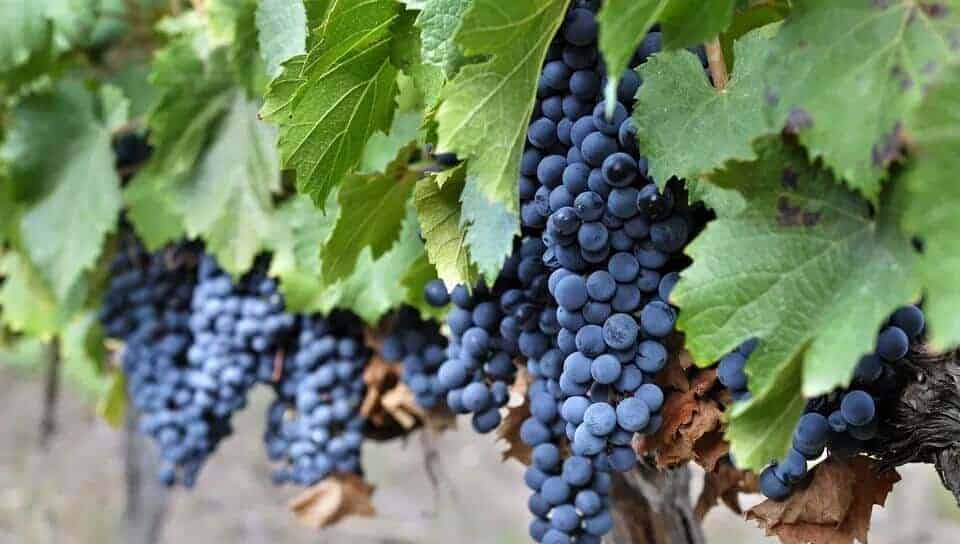
Introduction
Malbec is a purple grape used in red wine. It is one of the six grapes used in Bordeaux wine.
In addition to being associated with Bordeaux it is considered an Argentinian varietal. It is grown worldwide.
Key Characteristics
Grape's Origin
There is still disagreement around whether the grape is indigenous to France or if it was brought there by a Hungarian (the only historical reference to Malbec comes from a Hungarian surname).
However, the grape is considered French in origin, likely having originated in northern Burgundy.
This is contrary to what many people believe, namely that it is of Argentinian origin.
Grape's Behavior
Malbec is thin-skinned which makes it less resistant to vulnerabilities such as frost.
In fact, nearly 75% of the grape crop was wiped out by a famous frost in Bordeaux in 1956.
The grape is not resistant to many pests although viticulturists are working on strains that are more hardy.
It requires more exposure to heat and sun than other grapes. It matures late in the season and has the propensity for high yields. However, the quality drops of significantly when yields are like this.
Its taste varies depending on where the grape is grown although it is always flavorful and rich, leading to it often being blended with other wines.
French styles will be soft and less acidic with the predominant taste being blackberry. In Cahors the wine is very dark, often dark purple, and its aromatic notes include earthier scents like raisin, garlic and tobacco.
The Cahors Malbecs are considered “rustic” and even unrefined due to the heaviness.
When grown in warmer climates, in places like Argentina, Chile and Australia, the wine softens and is plush. It is juicy with fruit and violet.
In very warm climates the grapes often lose so much acidity as to produce weak-tasting, less desirable wines.
The cool climate of Washington State in the USA produces lovely dark fruit notes.
Malbec can be grown in all soil types but produces the best flavors in limestone based soils.
How Does it Look and Taste?
Malbecs are known for their inky rich colors which are most often described as dark purple.
These wines have similar flavor profiles no matter where they are produced: black- and other dark berries, plum, black pepper, cherry. They are known for their earthiness.
Top Production Areas
Malbec is grown in many regions but most notably France, Argentina, Chile and the US. Argentinian Malbecs are often considered the best.
Recommended Food Pairings
Malbec pairs best with cuisine with a good spice profile. Rich tomato sauces from Italy and the Middle East pair beautifully as do roasted meats and barbequed pork.
The wine pairs nicely with cuisines from around the world: Mexican, Italian, Spanish, Thai, and Middle Eastern.
What do the Experts Say?
"While Malbec is often associated with the now popular examples coming out of Argentina, its origins actually lie in the Cahors region of Southern France.
Malbec from Argentina's intensely sunny and dry climate offer lush, bold fruit flavors in an approachable, velvety package.
They are approachable in their youth and have soft tannin - which is part of the reason for their commercial success.
French Malbec, on the other hand, is a black, thick-skinned grape and the resulting wines are far more tannic, structured and savory.
These wines will reward some patience in the cellar and are often less approachable in their youth."
Ryan @ The FermentedFruit.com
Merlot
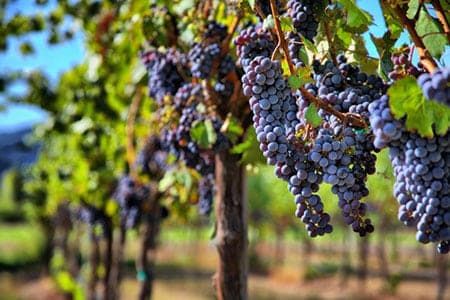
Introduction
Merlot is a black grape variety with a dark blue skin used in blends and single varietals.
It is associated with Bordeaux, California, Chile and Australia.
It is often used in blends to reduce the harshness of other grapes and tannins.
Key Characteristics
Grape's Origin
While not definitive, the grape has been seen in France since as early as 1784 and was first mentioned by name in 1824.
It is believed the name is derived from “merle”, the French word for blackbirds, which enjoy eating the grape straight off the vine.
Grape's Behavior
Merlot is early ripening however there are differences in style when dealing with the grape.
New World styles prefer to leave the grape on the vine for a late harvest that produces an inky wine that is very dark in color.
These are full bodied, high alcohol content wines with a velvety or lush mouthfeel. They have black fruit notes.
The traditional Bordeaux style includes early harvesting to produce a wine that is more acidic, medium-bodied, more moderate alcohol content and tastes of red fruit with vegetal notes.
Merlot prefers to grow in clay soil.
How Does it Look and Taste?
The wine’s appearance and taste vary depending on whether it is produced using The New World (International) Style or the more traditional methods used in Bordeaux.
New World Merlots are purplish and inky with notes of blackberries and plum.
Traditional Bordeaux Merlots will be lighter in color and more clear.
They will taste of fresh red fruits and also contain a vegetal or leafy strike.
Top Production Areas
Merlot is the third most grown grape in the world and found primarily in France, USA, Chile and Australia.
Recommended Food Pairings
When pairing Merlot with food it is important to first determine whether you have a New World or Bordeaux style Merlot.
Pair a New World Merlot with chargrilled or roast beef, pork and lamb - preferably rare.
Bordeaux style Merlots can be paired with grilled chops seasoned with thyme, rosemary and oregano; steaks in red wine sauce, Beef Wellington, lamb, roast poultry.
If you want to take it one step further, you can even make a chocolate Merlot cake out of it, which I must admit I am dying to try!
What do the Experts Say?
"Merlot got a bad wrap ever since the movie 'Sideways' came out over a decade ago. Most wine lovers now know Merlot is one of the great types of wine grapes of the world.
In fact, it's the most widely planted red wine grape in France. Despite its royal roots, Merlot is a well rounded easy drinking wine with genetics relating closely to Cabernet Franc and Cabernet Sauvignon.
Depending on who makes the Merlot, the tasting notes will differ greatly. For example, New World Merlot will have higher alcohol and more dark fruits.
While Bordeaux style Merlot will have lower alcohol and more red fruits. When it comes to Merlot there is certainly something for everyone."
Monique @ wineoh.tv
Muscat Ottonel
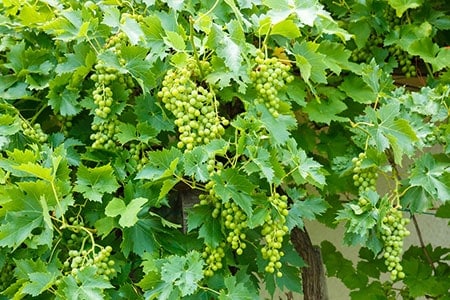
Introduction
Muscat Ottonel is an aromatic white grape variety used to make both sweet and dry wines.
In Austria, Croatia, Romania and Serbia the grape produces sweet dessert wines while in the Alsace region of France and Hungary the grapes make dry white wines.
In Canada and the U.S. (New York State), although to a lesser extent, it is used in both sweet and dry wines. The grape is also a “table grape” - a grape consumed as food.
Key Characteristics
Grape's Origin
The Muscat Ottonel grape type was bred as a cross between Muscat d’Eisenstadt and Chasselas in 1852 in the Alsace region of France.
Grape's Behavior
Muscat Ottonel is an early-ripening, late harvesting, cold hardy grape that does well in damp soil and cooler climates.
It is naturally less flavorful than most grapes with warm climates causing it to lose flavor.
How Does it Look and Taste?
Muscat is pale in color, and light in flavor. It is one of the more “grapey” wine grape varieties, and whether sweet or dry has the distinct flavor of grape.
Its flavors are a combination of floral notes like rose and stone fruit like peach. Muscat will also have hints of coriander.
Top Production Areas
Eastern Europe is the area where the grape is found mostly, namely Austria, Croatia, Hungary, Romania, and Serbia.
It is the most grown of the Muscat grapes in the Alsace region of France.
The grape is also finding success in Canada and the Finger Lakes Region of New York in the US.
Recommended Food Pairings
The idea pairing for Muscat Ottonel wines, whether sweet or dry, are cream and fruit desserts.
Light cakes with honey and fruit, flan or other custard based desserts, and even ice cream will pair beautifully.
While these are the classic pairings, don’t overlook pairing it with dinner.
The wine pairs surprisingly well with light fare. Salads, light fish and chicken, spicy Indian food and Turkish cuisine are your best choices.
What do the Experts Say?
"Despite a recent proliferation of wines labeled Muscat (or Moscato), there's not one Muscat grape but many, ranging from white to very dark skinned and made into dry, sweet, and sparkling wines worldwide.
Ampelographers believe Muscat Blanc à Petits Grains and Muscat of Alexandria, both white grapes that have been grown throughout the Mediterranean for centuries, are the progenitors of the sixteen most common varieties currently in use, although Muscat Blanc à Petits Grains is by far the most common.
Generally speaking, Muscat-based wines are highly perfumed with pronounced floral notes of lily, orange blossom, rose petals, candied citrus peels, and spices. The aromatic sweetness can be confusing to tasters who expect the wine to taste sweet even if it's fully dry.
Dry Muscat wines are delicious with cheeses, lighter meats, and seafood, while sweeter styles, including sweet sparklers, are terrific with fruit, fruit desserts, spiced cakes and tarts, and creamy desserts.
Late harvest and fortified styles pair well with aged and blue cheeses and desserts featuring nuts, caramel, or chocolate."
Meg Maker @ Terroirreview.com
Nebbiolo
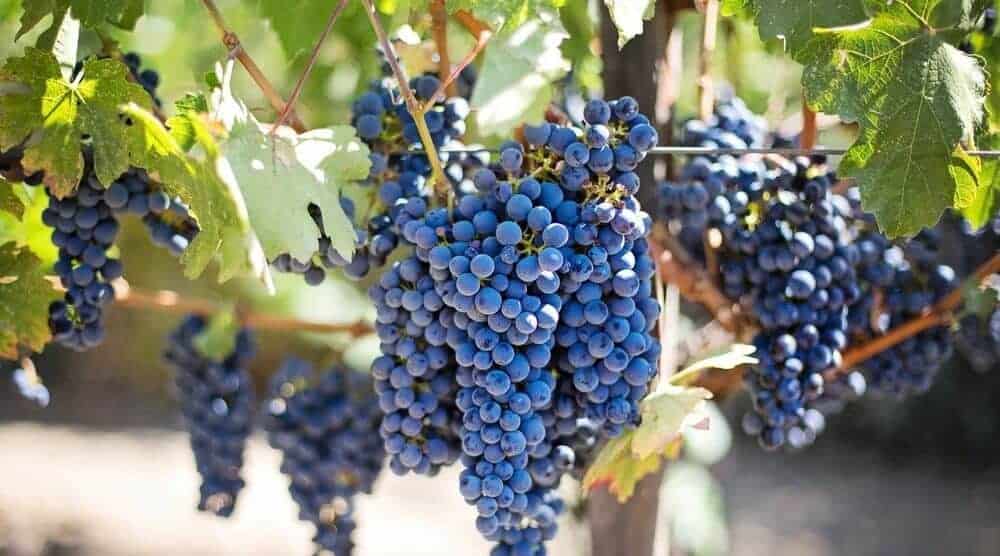
Introduction
Nebbiolo is an Italian wine grape used in Barolo, Barbaresco, Gattinara and Ghemme. It is most associated with the Piedmont region.
It is a grape that produces unusual flavors after careful production and many years of aging.
Key Characteristics
Grape's Origin
It has long been believed that Nebbiolo is native to Italy’s Piedmont region although there is DNA evidence that points to its origin being slightly east, in Lombardy.
While not named specifically, notes from Pliny The Elder mention high quality wines in the area that sound like Nebbiolo-based wines.
Those notes are from the first century. In 1268, 1303, and 1304 written documents show evidence of Nebbiolo although called by similar, but not the same names.
The origin of the grape’s name is interesting.
While some believe that it is derived from the Italian word for 'fog' it is not sure if this is because the grapes, when they reach maturity, develop a white film or if it is because around the time they are harvested, in October, the region becomes foggy.
Others believe the grape name could have been derived from the Italian 'nobile' which translates to “noble”.
Grape's Behavior
Nebbiolo produces wines that are light red. When young they are highly tannic with aromas of rose and tar.
As Nebbiolos age they develop into darker, brick-red or orange colors and become more complex in aroma and flavor including violet, tar, wild herbs, red fruits, truffles, tobacco and prunes.
Because they are highly tannic they require long periods of aging to develop flavors that work with the strong tannins.
The grape thrives in many types of soil, especially those with calcareous marl, and while it does thrive in sandy soils grapes grown there are noticeably less aromatic.
How Does it Look and Taste?
The color of Nebbiolo is a light, ruby red. Some winemakers find the color unattractive and will add other grapes to make the color deeper.
Nebbiolo is known for its strong flavors which include harsh tannins and because of this is often used in blends.
The flavors include earthy, chewy ones like anise and liquorice. It is an incredibly strong wine but when aged properly the taste is fantastic.
Top Production Areas
Nebbiolo is primarily grown in the Piedmont region of Italy and some of its neighboring regions.
Australia and the US have also attempted growing the grape but it is often difficult to find suitable land for the grape.
Recommended Food Pairings
Nebbiolo can be difficult to pair because of its strong flavors but does pair beautifully with rich dishes.
Ideally it should be paired with lamb and beef dishes (like heavy stews), mushrooms and root vegetables, veal and aged cheeses because they will not be overwhelmed by its flavor.
What do the Experts Say?
"For me it is the Italian grape by excellence, very versatile according to the location and soil type. It loves calcareous soil, sunshine and hills.
Barolo, Barbaresco, Langhe, Ghemme, Gattinara... many famous appellations. It can be powerful with a more elegant style.
Intensely aromatic often described as tar and roses. Strong tannins, high acidity."
Vindeling.com
Pinotage
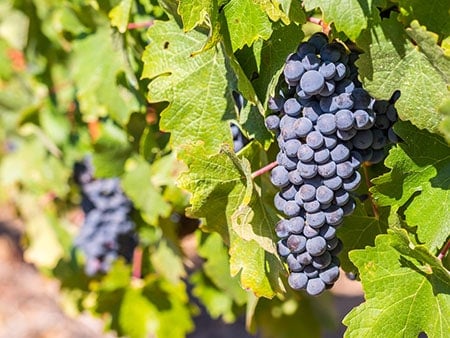
Introduction
Pinotage is synonymous with South Africa having been bred there in 1925.
It is used in making a distinct varietal but also blended, used to make fortified wine and red sparkling wine.
Key Characteristics
Grape's Origin
The exact heritage of Pinotage is known - in 1925 it was bred as a cross between Pinot Noir and Hermitage (Cinsaut) thus being named Pinotage.
The idea came from a desire to produce a grape that could make great wine while also being easier to grow than Pinot Noir.
The first time the name Pinotage appeared publicly was on a bottle in the year 1961.
Grape's Behavior
Pinotage is early ripening and easy to grow. It can be trellised or non-trellised.
While it does grow easily this means it must be pruned regularly to prevent too high of a yield.
Pinotage prefers hilly land with clay-rich soils.
How Does it Look and Taste?
The wine produced is a dark, deep ruby color and nearly opaque. Its taste is distinctive, usually in a good way.
Expect a nose full of red fruit and berries, some will have a tropical fruit note.
On the palate Pinotage is a mix of the aromas with added flavors of smoke and earth.
The chemical makeup of the grape can make the wine develop tastes of acetone and paint, for which it has been criticized.
Many winemakers are experimenting with techniques to reduce these flavors.
Top Production Areas
Stellenbosch, South Africa is the largest producer of Pinotage but it can be found elsewhere.
New Zealand and Zimbabwe have planted Pinotage grapes heavily and Germany, USA, Israel and Brazil have also started growing the grape.
Recommended Food Pairings
Pinotage is a great wine to enjoy with dinner. It is robust and unrefined so it does well with the strong flavors of smoked duck, game, peppers, hot Indian curries, barbecue sauce, and chili.
It pairs well with a cheese course especially if you are enjoying sharper cheeses like cheddar and manchego.
What do the Experts Say?
"South Africa's very own grape variety developed at the Stellenbosch University in the 1920's as a cross between the French grape varieties Pinot Noir and Cinsault.
Pinotage comes in many degrees of ripeness and styles. Its best expressions are from low yielding wines with long cool ferments. This produces a fuller bodied wine, that is lightly aromatic with classic earthy, red berry fruit and improves the tannin structure.
Some savoury smoke and meat characters are also common. Look for wines that have balanced elegance and a moderate alcohol. Lighter styles are still good drinking particularly with Boerewors and midweek dining."
Lisa @ Winemusing.com
Pinot Gris (Grigio)
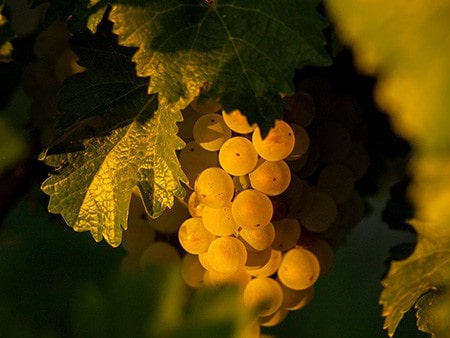
Introduction
Pinot Gris is a wine grape variety grown worldwide and used in several varietals and blends.
The grape itself is usually a gray-blue - gris is French for “gray” - but the fruit, and wine it produces can be found in many colors.
It is a popular grape when making orange wine. Its name, like Pinot Noir, includes the French for pinecone, likely because of the cluster in which the grapes grow. The clone grown in Italy is referred to as Pinot Grigio.
Key Characteristics
Grape's Origin
Since the Middle Ages, Pinot Gris has been found in Burgundy.
It is a mutant strain (specifically, a color variation) of Pinot Noir and spread with that grape to Switzerland, Hungary, Germany and beyond.
Grape's Behavior
Pinot Gris grows in a cone-line cluster, making the grape susceptible to rot. It grows best in cool climates and matures early.
The wine grapes themselves, even when grown on the same vine, can vary in color from the bluish grey that gained the grape its name to a pinkish brown.
The grape can vary greatly in how it tastes and the wine it produces but the two varieties known best are the spicy, full bodied Alsace version and the more acidic, lighter bodied Italian version.
Pinot Gris grows well in warm, volcanic soils but is grown worldwide in a variety of soils.
How Does it Look and Taste?
Wines made from Pinot Gris range in color from golden yellow to copper. Some wines produced can even appear pink. When used in orange wine it is more copper and orange than anything else.
The flavor profile of Pinot Gris changes depending on where it is grown - the grape takes on its terroir - and the style of winemaking. Those made in Alsace are medium to full bodied with a rich, floral bouquet.
These wines will have a notable spice where others will not. Most Pinot Gris are not usually meant for aging, but those from Alsace age well.
German Pinot Gris are fuller bodied and balance acidity with light sweetness.
The cool climate of Oregon develops a wine that are of a medium body. These have tree fruit and melon notes and a copper-pink hue.
The warmer climate of California lends to a light bodied, refreshing wine that is crisp with a vegetal strike.
The Italian version, Pinot Grigio, is light bodied and colored and has an effervescent quality and is crisp and acidic.
Top Production Areas
Pinot Gris is an easier grape to grow and wine to make due to short fermentation. Because of these factors it is grown in nearly all wine regions.
Recommended Food Pairings
When pairing a Pinot Gris it’s important to note the body of the wine.
A light bodied Pinot Gris (like those from California and Italy) are best paired with shellfish and quiche.
Those with more body pair well with white meats and pate.
What do the Experts Say?
"Pinot Grigio (aka Pinot Gris) ,a gray-red grape, is one of the many mutations of Pinot (Pinot Noir, Pinot Blanc, etc).
It produces a light-bodied, dry, refreshing wine with a citrus character and zesty acidity. Typical flavors include lemon, lime, pear, and green apple. It's a wine that's best consumed within a year or two of harvest.
It makes a great aperitif and pairs well with fresh cheeses such as goat, fresh mozzarella, gruyere, and grano padano cheeses, as well vegetables, and salads. It also pairs well with light meals including raw fish, fish and shellfish."
Martin @ Enofylzwineblog.com
Pinot Noir
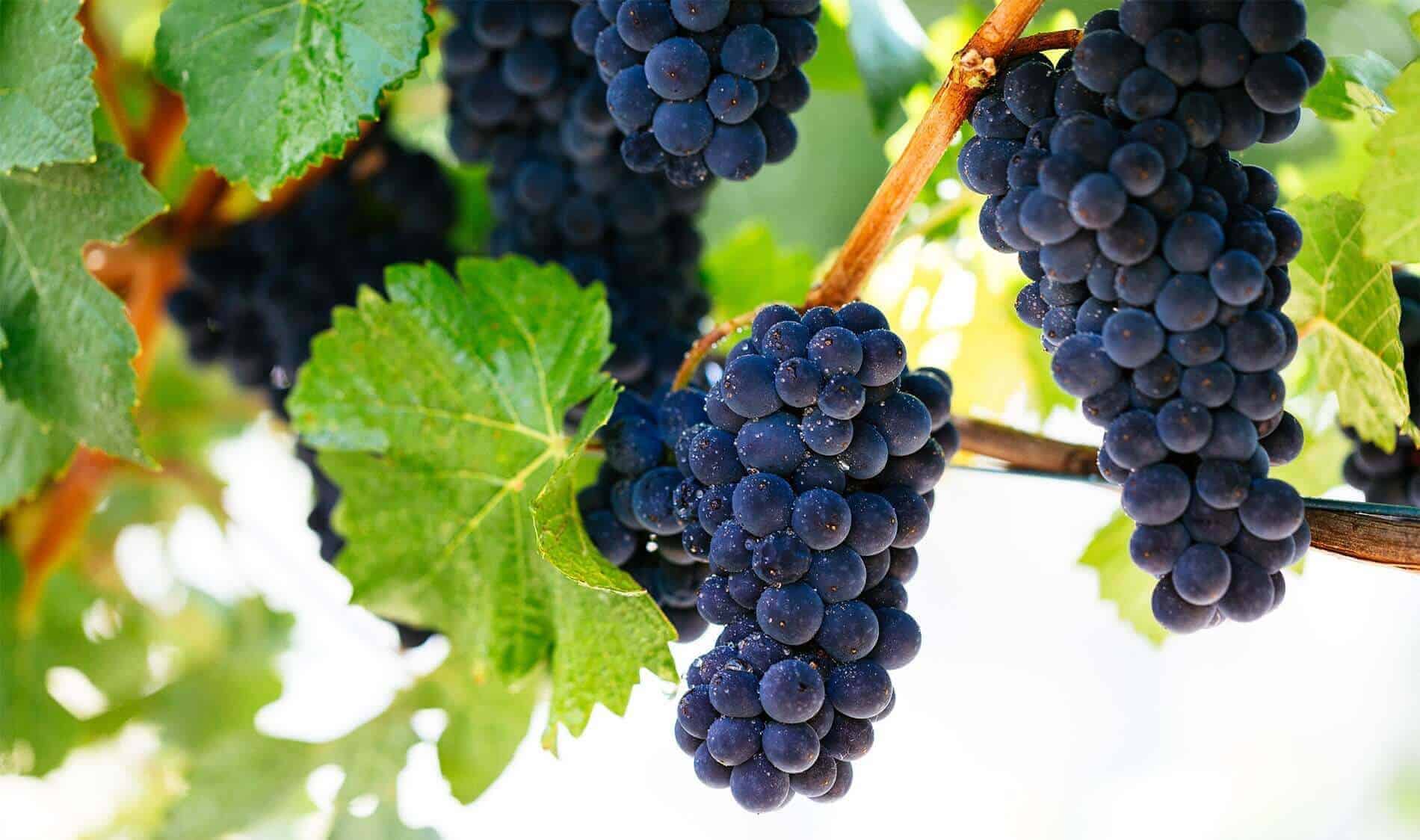
Introduction
Pinot Noir is a popular variety of red grape. Its name comes from the French words for “pine” and “black” likely referring to the dark color of the grape and the way it grows in a tight, cone-shaped cluster.
Key Characteristics
Grape's Origin
Pinot Noir is an ancient grape and as such its origin is impossible to pin down, although there are several theories.
A document from the first century tells of a similar variety growing in Burgundy and similar grapes that grew in Belgium prior to the phylloxera outbreak.
Grape's Behavior
Pinot Noir is difficult to cultivate and make wine with. From its time on the vine, the tightness of the fruit allows for moisture to be trapped leading to rot.
Vine management must be precise and ongoing. Additionally, it is a thin-skinned grape susceptible to weather which makes the flavor difficult to predict.
Young wines made from Pinot have aromas of cherry, raspberry and strawberry. Older wines develop earthier and, at times, mustier aromas giving the wine a reputation as being complex.
Pinot Noir is finicky, pale and light tasting and yet it is one of the most beloved wines due to its difficulty to manage and complexity in flavor when produced properly.
How Does it Look and Taste?
Pinot Noirs are some of the palest reds on the spectrum with young varieties being translucent, pale berry colors reminiscent of cran- or raspberry.
As Pinot Noir ages it develops a more brick red color that can include hints of brown.
The typical flavor profile of Pinot Noir includes ripe red fruit, cherry, chocolate, toast and spice.
When produced carefully it can also develop complex layers of unique flavors like licorice, cola, mushroom, wet leaves and tobacco.
Top Production Areas
Pinot Noir is grown worldwide and a favorite grape in cooler climates. It is one of the most widely-grown grapes despite its difficult nature.
Recommended Food Pairings
Pairing Pinot Noir is easier than many other wines because it is light, making it pair well with seafood as well as the richest of meats and it is a good option when diners are eating a wide variety of dishes.
To pair best, consider a fruitier Pinot Noir with lighter fish and chicken and a more tannic one with richer meats.
Essentially, match the deepness of wine with the heaviness of the food.
What do the Experts Say?
"Seductive, elegant and earthy, Pinot Noir unites friends, food and good time into a glorious dining experience.
Pinot Noir is the greatest food wine on the planet and a natural partner for foods from the sea (salmon), the air (quail), the water (duck), and the earth (venison).
Beyond its affinity for food, Pinot Noir can be so sublime that words such as mind-blowing, sensational, sexy and orgasmic come to mind.
Unfortunately, it is also a fickle grape and not easily tamed, only prospering in cool climates, requiring gentle handling, and needing kid-glove handling in the winemaking process.
Expensive to grow and exhausting to make, Pinot Noir rewards the accomplished winemaker with a wine that arouses the most affection in the cerebral pleasure center of any varietal."
Rusty @ PrinceofPinot.com
Riesling
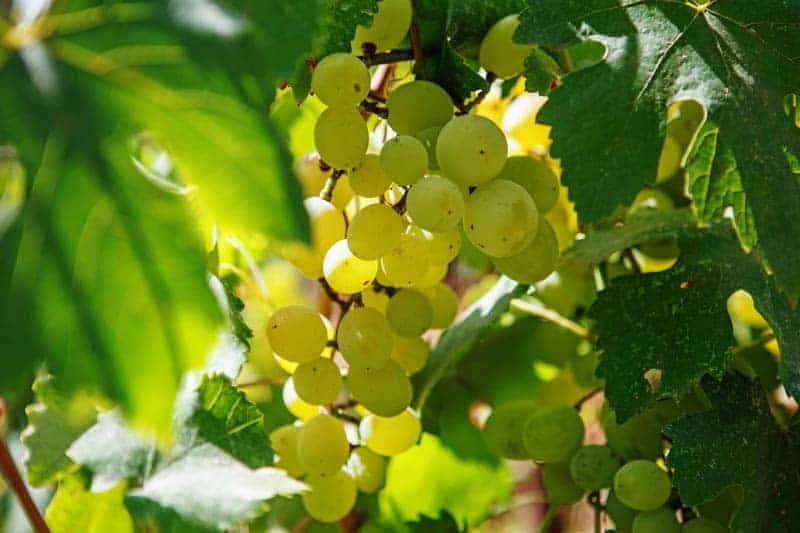
Introduction
Riesling is a white grape from Germany that is aromatic to the point of being perfumed and yields high acidity.
It can be used to make dry, semi-sweet, sweet and sparkling wines and is done so as a single varietal without oak aging.
It is grown in many places but is the most grown grape in Germany and Alsace.
It is the 20th most commonly grown grape in the world and in addition to Germany and Alsace, it is grown widely in the wine regions of Austria, Serbia, the Czech Republic, Slovakia, Luxembourg, northern Italy, Australia, New Zealand, the Americas, China and Ukraine.
Key Characteristics
Grape's Origin
Riesling originated in the Rhine region of Germany.
Grape's Behavior
Riesling is a late harvesting grape often kept on the grape long past the other varieties - sometimes even until January - in order to allow for noble rot. Many Riesling grapes are then used in ice wines.
The most notable fact about the behavior of Riesling is that it reflects terroir completely.
This allows for the grape to produce a huge variety of colors, aromas and flavors in wine.
Despite this, many believe that it only produces sweet wine.
Slate is the best soil for growing Riesling but it also does well in sandy loam.
How Does it Look and Taste?
Rieslings are often a brighter, paler yellow but this can vary depending on age.
The taste experience of Riesling should always include time spent simply smelling the wine.
It is highly aromatic and breathing it will allow for the flavors to truly be experienced. Aromas include honeycomb, ginger, diesel fuel, rubber, honey, and beeswax.
Rieslings’ most common flavors include apricot, pineapple, lime, tree and stone fruits, and meyer lemon.
Flavor is determined by the method used, terroir, and age of the wine.
Top Production Areas
Germany and the Alsace region of France are the biggest producers of Rieslings but it is commonly grown in many cool climate wine regions including Austria, New Zealand, Canada and The United States.
It is growing in popularity and use, which has caused it to now be grown in unexpected regions like South Africa, China, and Italy.
Recommended Food Pairings
The key to pairing Riesling is to select spicy food - those that can handle and cut through its sweetness. Asian and Indian cuisine pairs best.
What do the Experts Say?
"What I enjoy about Riesling is that it is so versatile - whether it is the style to be produced by the winemaker or the wine lover looking to pair a wine with food.
Rieslings can be found dry or off-dry, and pair well with spicy foods whether it is Mexican, Asian, or Indian. Also perfect for just summer porch sippin'."
WildWallaWallaWineWoman.com
Sauvignon Blanc
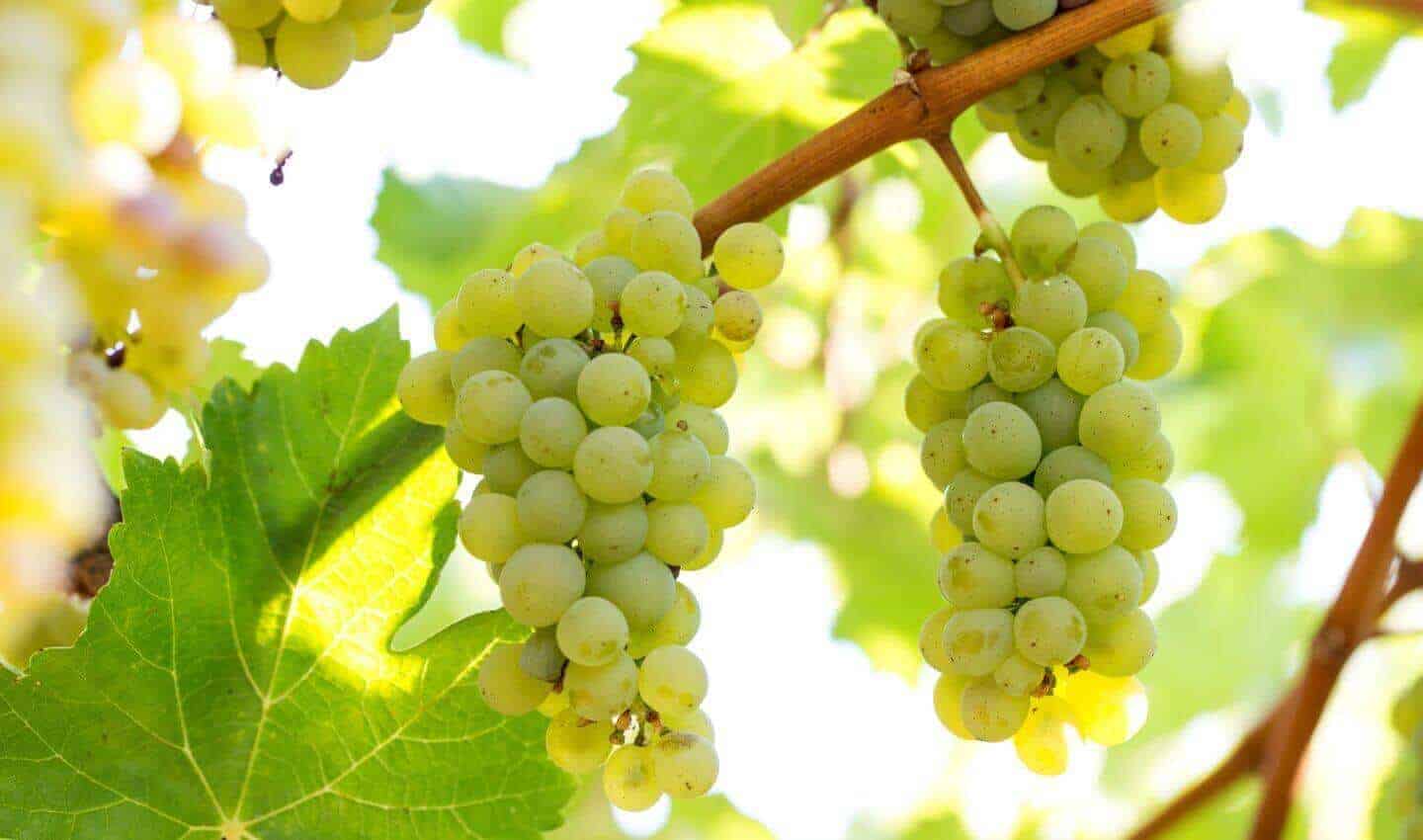
Introduction
Sauvignon Blanc is one of the most expressive and recognizable grape varieties thanks to its intense aromatic nature and lively freshness.
It is also part of the so called "international grape varieties", being cultivated all around the world and garnering appreciation from both producers and consumers thanks to its organoleptic qualities and great adaptability.
Key Characteristics
Grape's Origin
Its origins are French as the grape is apparently native to Bordeaux, where it is still widely used for the production of dry white wines and to add freshness to the famous sweet wines of Sauternes and Barsac.
Now, the French region of the Loire Valley is more connected to the grape. The Loire Valley is located in northern France and home to the famous Sancerre and Pouilly-Fumé wines.
Thanks to its popularity, Sauvignon Blanc has spread from France to almost all the wine-producing countries of the world and has found a second home in the Marlborough wine region of New Zealand.Grape's Behavior
Sauvignon Blanc is an adaptable grape variety, a feature that helped it spread around the world.
Climate has an important role in its cultivation: the grape is late budding and early ripening and prefers a mild climate and a slow ripening season that allows the development of its aromatic features.
It can also adapt to different soils although on stony or chalky soils, it shows its most mineral face.
It is often produced and kept in stainless steel to enhance its freshness and aromatic character although a few producers allow it to spend some time in wood to give it more roundness.
Sauvignon Blanc wines tend to show their best at early age; so the suggestion is not to leave them in the cellar.
How Does it Look and Taste?
Sauvignon Blanc tends to have a bright yellow color and an intense nose that can differ depending on where the grape is cultivated.
It often shows a citrus backbone with green aromas of bell pepper, tomato leaves, or basil. With a bit of warmth it develops tropical fruit flavors such as pineapple.
In the mouth it is characterized by a good acidity, a light to medium body, and medium alcohol content.
Top Production Areas
Sauvignon Blanc is produced all over the world, both as a varietal and in blend.
For example, in the South West of France and more particularly Bordeaux, its land of origin, it is blended with Semillon for the production of both dry and sweet wines.
On the other hand, in the Loire Valley it produces beautiful and elegant wines with fruity and flowery notes and an intense minerality from the chalky local soil.
In New Zealand this grape has much more herbaceous and tropical character with pungent citrus fruit and exuberant acidity.
It is also successful in Chile, South Africa and California.
Recommended Food Pairings
The undeniable personality of Sauvignon Blanc, its pungent aromas, matched by a tantalizing flavor, make it a perfect companion to a multitude of dishes, especially vegetarian.
Although it can go very well with white fish, as an aperitif, and with asparagus.
What do the Experts Say?
"Sauvignon Blanc tends to have green, even vegetal flavors, and that makes it an excellent choice with strong-flavored vegetables that don't go well with other wines.
When I'm having asparagus or artichokes, my first thought is usually Sauvignon Blanc."
Semillon
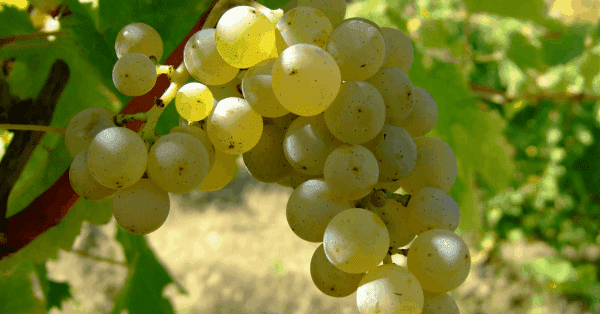
Introduction
Sémillon is a gold-skinned grape used in dry and sweet white wines.
It is associated with France and Australia. Sémillon is one of the three approved whites in Bordeaux.
Key Characteristics
Grape's Origin
The grape’s origin is unknown except that it came to Australia in the early 19th century. Its name is French, derived from the Latin for “seed”.
Grape's Behavior
Sémillon is high yielding, easy to cultivate and not especially vulnerable except to rot.
The grape is thin-skinned so it is best grown in places with sunny days and cool nights. It is early ripening.
The grape is heavy, low in acidity and has a texture often described as oily.
In addition to its high yields, wines made with Sémillon age well and can be kept for a long time.
Sémillon is not picky about soil but should be grown in soil that is well-drained to help avoid conditions where rot would occur.
How Does it Look and Taste?
The wine’s appearance is generally buttercup yellow. Its aromas will include burnt toast, apple, apricot, pear and vanilla.
Flavors include the aromas (except burnt toast) honey, lemon and grass.
Top Production Areas
Sémillon is mostly produced in France, Australia and the Pacific Northwest.
It used to be more prevalent in South America and South Africa but has dropped in popularity and production.
Recommended Food Pairings
The suggested pairing is Japanese food, clams, mussels, seafood, and blue and stilton cheeses.
What do the Experts Say?
"A bit of an ugly duckling grape, Semillon when young can be a little gawky, but with time, it comes out of its shell to reveal its pithy citrus greengage flavours, and a richer, almost toasty side.
In its home of Bordeaux, it's often used in blends with Sauvignon Blanc, and is also the main grape in one of the world's most famous sweet wines, Sauternes.
Elsewhere, look for wines from Australia's Hunter Valley - the best need five years to really hit their stride, and improve for a decade or more beyond that."
Simon Woods @ Simonwoods.com
Shiraz / Syrah
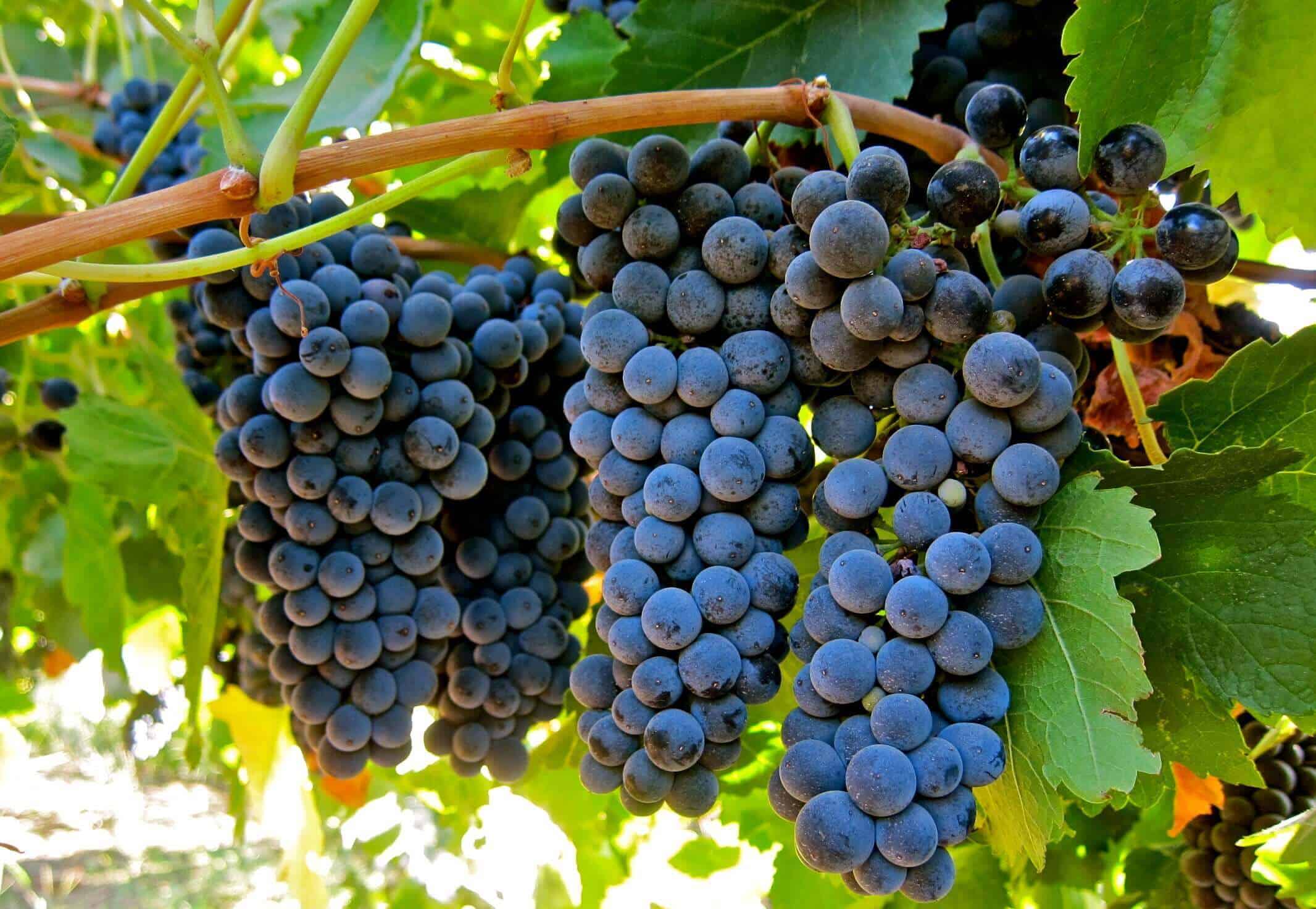
Introduction
Shiraz is a major dark-skinned wine grape variety used mostly in the production of red wine.
Shiraz is the same grape as Syrah, the difference being that Shiraz indicates the wine has been made either in the New World or using New World methods, greatly changing the final product.
Shiraz is used on its own and in blends and is found grown in all wine regions.
Key Characteristics
Grape's Origin
There are many myths surrounding the origin of the grape but science, specifically DNA testing, has proved that the grape is native to France.
It is a derivative of two ancient grapes, one red and one white. While some will refer to it as Persian (modern day Iran) this is false.
It is likely that people believe this because the city of Shiraz in modern day Iran used to produce something called “Shirazi wine”. The two are not related.
Grape's Behavior
Shiraz is a well-behaved type of wine grape. It is late budding, early ripening, medium to high yielding, hardy, adaptable to climate and will produce delicious juice and wine in nearly all circumstances, making it a very popular grape throughout the world’s wine regions.
Shiraz is best when in direct contact with sunlight, so extra care is needed in training the grapes. It also needs more water than some other grapes when young.
Shiraz thrives best in rocky soil that has good drainage.
How Does it Look and Taste?
Shiraz is opaque with little variation when tilted except when very young.
Shiraz is rich and dry, fruit forward, spicy and made with very ripe fruit.
Shiraz will have aromas of raspberry, blackberry and blueberry, black pepper and liquorice.
Oaking the wine will round it out with woody and earthy flavors along with vanilla.
Top Production Areas
Australia is likely the biggest producer of Shiraz, with areas of California and Washington state in the U.S. not far being.
While the Rhone is the top producer of the grape that makes Shiraz they usually produce a very different wine labeled as “Syrah”.
Recommended Food Pairings
Shiraz is easy to pair and does best with flavorful foods, especially slow grilled meats.
This is the perfect bottle to bring to a barbecue and should be paired with grilled meats like slowly grilled brisket, grilled lamb, and lean steaks.
In cooler weather try it with mild to medium-spiced beef chilis.
Shiraz is also a great wine for those who like fish but don’t like white wine, the traditional pairing.
It is important to note that Shiraz is not the best wine to pair with cheese.
What do the Experts Say?
"First, it's important to understand the relationship between Syrah and Shiraz, the French and Australian names for the same grape.
Nominally, they are synonyms, but there are certain stylistic associations with both words.
While certainly some "Shiraz" is grown in cooler sites in Australia (like Margaret River and Mornington Peninsula and elsewhere), most Australian Shiraz would appear to be grown in warmer, dry areas like the Barossa Valley, where it often takes on certain flavor characteristics that I would argue are not the true or optimal expression of the grape.
Alas, much of the Syrah/Shiraz grown in California and Washington have rather similar flavor profiles.
Maybe it's best to begin with a discussion of proper Syrah, grown in the Northern Rhône, where it achieves the apotheosis of its potential.
To my taste, Syrah does its most interesting work in cooler sites and in soils that are not overly fertile, nor can the vines really stand to be over-stressed.
Proper Syrah will have a most characteristic aroma of white pepper, anise (or licorice), bacon-fat, smoked meat or even truffle. There will often be a savory quality associated with it; it's not atypical to find the aroma of black olive (or tapenade).
When Syrah is fermented with whole bunches, it may take on a sort of pleasant herbal quality - typically, rosemary. Syrah can be aromatically quite pungent, maybe even too much for some, but for those who love that complex of aromas, it is among the most satisfying red wines one can find.
So, for me, these are the signifiers of "true" Syrah, and you may sometimes find some of this character in Syrah grown on warmer sites, but from warmer sites, you will more typically find a raspberry jammy-ness or the character of plum or prune; typically warm climate Syrahs can be very high in alcohol.
In warmer sites, Syrah will typically be low in acid or if not, an acid addition will typically have been made, which if not done very carefully, can lead to a slightly disjointed character in the wine.
Proper Syrah can be paired with a lot of dishes that work well with Pinot Noir, but especially with gamier meats and wild fowl. Lamb (seasoned with rosemary) is particularly brilliant with Syrah."
bonnydoonvineyard.com
Tempranillo
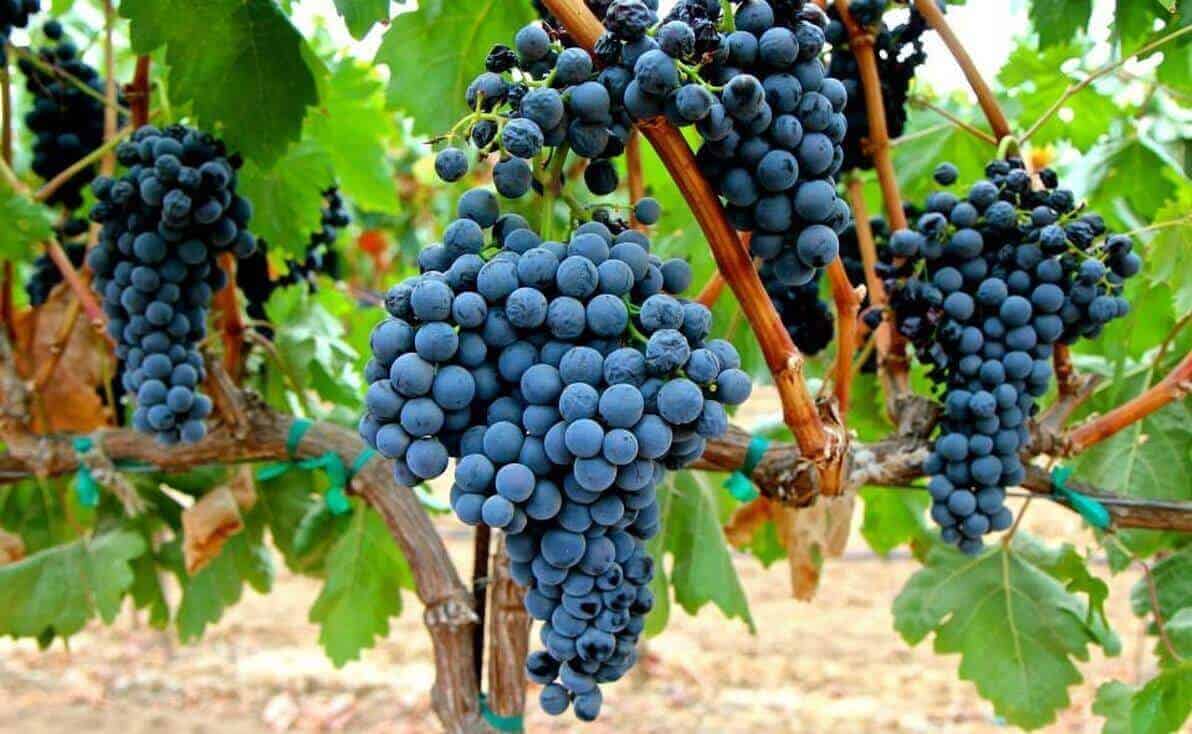
Introduction
Tempranillo is the major Spanish red grape variety used for the production of the famous Rioja and many other local wines but it is also cultivated in Portugal where it is called Tinta Roriz or Aragonez, in Australia and South America.
Key Characteristics
Grape's Origin
Its origins are not totally clear, as, despite being considered by many a Spanish indigenous grape variety, some maintain that it may actually originates from Southern France.
Its name seems to be connected to its tendency to early maturing; in fact the Spanish word “temprano” translates to “early”.
Grape's Behavior
Tempranillo is late budding and early maturing and has a fairly short ripening season that makes it suitable for growing even in the relatively cold areas of northern Spain, such as Rioja, where blended with Garnacha it gives life to the most famous Spanish red wine.
This grape actually prefers a cooler climate, in order to maintain its elegance and acidity and also because in hot climates it tends to develop indistinct flavors.
In terms of soils, the best wines come from chalky clays that can guarantee the development of acidity, body and complexity.
The grape is also used in blend, for example with Grenache (as in Rioja) or other aromatic varietals to supply for a somewhat lack of fragrance.
How Does it Look and Taste?
Although Tempranillo is not normally dense, in perfect growing conditions it can produce wines with a depth and alcohol level similar or equal to of Cabernet Sauvignon.
Tempranillo wines have a deep ruby color and turn garnet with age. On the nose they are characterized by aromas of red fruit (strawberry, currant), some spicy notes (vanilla and cloves – especially if aged in oak), leather and tobacco.
In the mouth they have a medium to medium-high body, moderate acidity and medium tannins often softened by some time in oak.
Tempranillo can be produced with a young style: fresh, pleasant and fruity to drink quickly, or vinified to mature many years in a cask.
Oak aging tends to generate increased complexity and harmony in Tempranillo, adding some vanilla and coffee nuances to the taste.Top Production Areas
Spain is Tempranillo’s homeland and it is the place where it produces its most famous wines such as the Rioja and Ribera Del Duero.
The grape is present all over the country and in neighboring Portugal where it is used in Port with Touriga National, Touriga Francesa, Tinta Barroca and Tinta Cão.
Its cultivation is also quickly spreading in South America, Australia, where it’s giving good results especially in McLaren Vale, and other countries such as Italy, Mexico and the US.Recommended Food Pairings
Tempranillo grapes make great food wines and match very well with central/northern Spanish cuisine from around the Rioja area.
In particular, it makes a perfect match to casserole and grilled meats, chorizo and sheep cheeses. Its younger versions are also very good with tapas.
You can discover some great food pairing suggestions for Tempranillo wines in our new guide.
What do the Experts Say?
"Tempranillo is a diverse grape that can yield many styles. Most famously, red and rosado Rioja wines from Spain are classic examples.
With it's earthy but fruit forward style, Tempranillo is gaining traction in California in areas like Lod where Bokisch makes fantastic wines, as well as southern Oregon with pioneers like Abacela.
If you are looking for a wine that can be enjoyed young, fresh and fruity - or a wine that be aged with dark spices, tobacco, and aged meats, look not farther than tempranillo!"
Thea @ LusciousLushes.com
Viognier
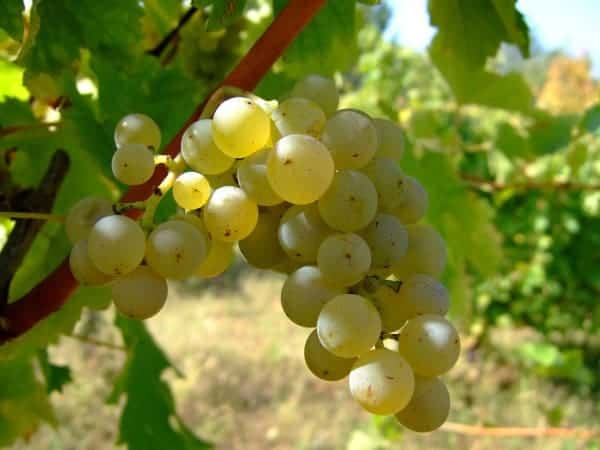
Introduction
Viognier is a French wine grape variety spread all over the world and producing various styles of wines including the prestigious Condrieu wine of the Rhone Valley.
Key Characteristics
Grape's Origin
According to legend, the grape has Dalmatian origins and was brought to France by Emperor Probus.
But the latest scientific research states that its real homeland is the northern Rhône Valley.
The great attack of phylloxera and the First World War caused the abandonment of vineyards and only a few acres of Viognier managed to survive so that in 1965, this grape covered only 8 hectares of land in France.
Gradually, over the last several decades, this grape has been replanted receiving international acclaim and spreading in various countries such as Italy, Spain, Australia and California.
Grape's Behavior
Viognier has a regular production but gives relatively low yields.
It prefers warm climates and can resist drought, but it is not such as easy grape to cultivate: if harvested too soon it doesn’t show its aromatic depth but if harvested too late it may lose acidity and get dull.
In order to fully express its aromatic character and to achieve a perfect harmony of freshness and sugars it is fundamental to pick grapes at their ideal maturation peak.
How Does it Look and Taste?
Viognier can produce wines with unique features, combining the structure of the best Chardonnay with the freshness of Sauvignon Blanc. Its bouquet offers aromatic and tropical notes worthy of a good Gewürztraminer.
Its color is bright straw. The nose is a riot of flowers with lily, lemon flowers, narcissus, acacia flowers and lavender, flanked by classic notes of apricot, peach, citrus peel, and aromatic herbs such as sage and cardamom.
The palate is warm, round, with a fresh medium acidity and a lingering finish that flows into memories of apricot.
Top Production Areas
It is in the Rhone Valley, its homeland, that Viognier produces its most interesting and prestigious wines including the tiny appellation of Condrieu.
It is also used in blends (even with the red Shiraz) in many other appellations.
It is also cultivated in the US and it is one of the most important white varieties in Australia.
Recommended Food Pairings
Its flavor makes it a sophisticated wine and is recommended to pair it with a delicate and spicy cuisine such as Thai or Peruvian.
It can be a pleasant aperitif, and can match very well with white meat dishes and seafood.
What do the Experts Say?
"I don't get to try as much viognier as I would like - focusing on Napa - but there are a few producers who make a nice wine from the varietal including a couple of Rhone focused wineries.
I like the softness and roundness that this varietal is capable of when it is made 100% varietal or close to - especially when it has been stirred upon the lees during the wine making and or the oilness sometimes perceived due in part to the skins. Here are some notes, based on my Napa perspective.
Viognier has long been associated with the Rhone Valley in Southern France but is planted in a number of other wine growing regions around the world including North and South America, Australia and New Zealand. It is a fine balance on when to pick it - it needs to be ripe but if under ripe or over ripe you lose some of its desired characteristics.
Here in Napa we use it a number of ways - as a stand along varietal, commonly co-fermented with Syrah (although sometimes with other red varietals) and also used in blends with various white varietals including Chardonnay often for the aromatics as well as mouth feel.
Viognier is a very aromatic varietal when it is young, especially when it is grown in warmer parts of the Napa Valley (floral, peaches, citrus notes, sometimes tropical)."
Zinfandel
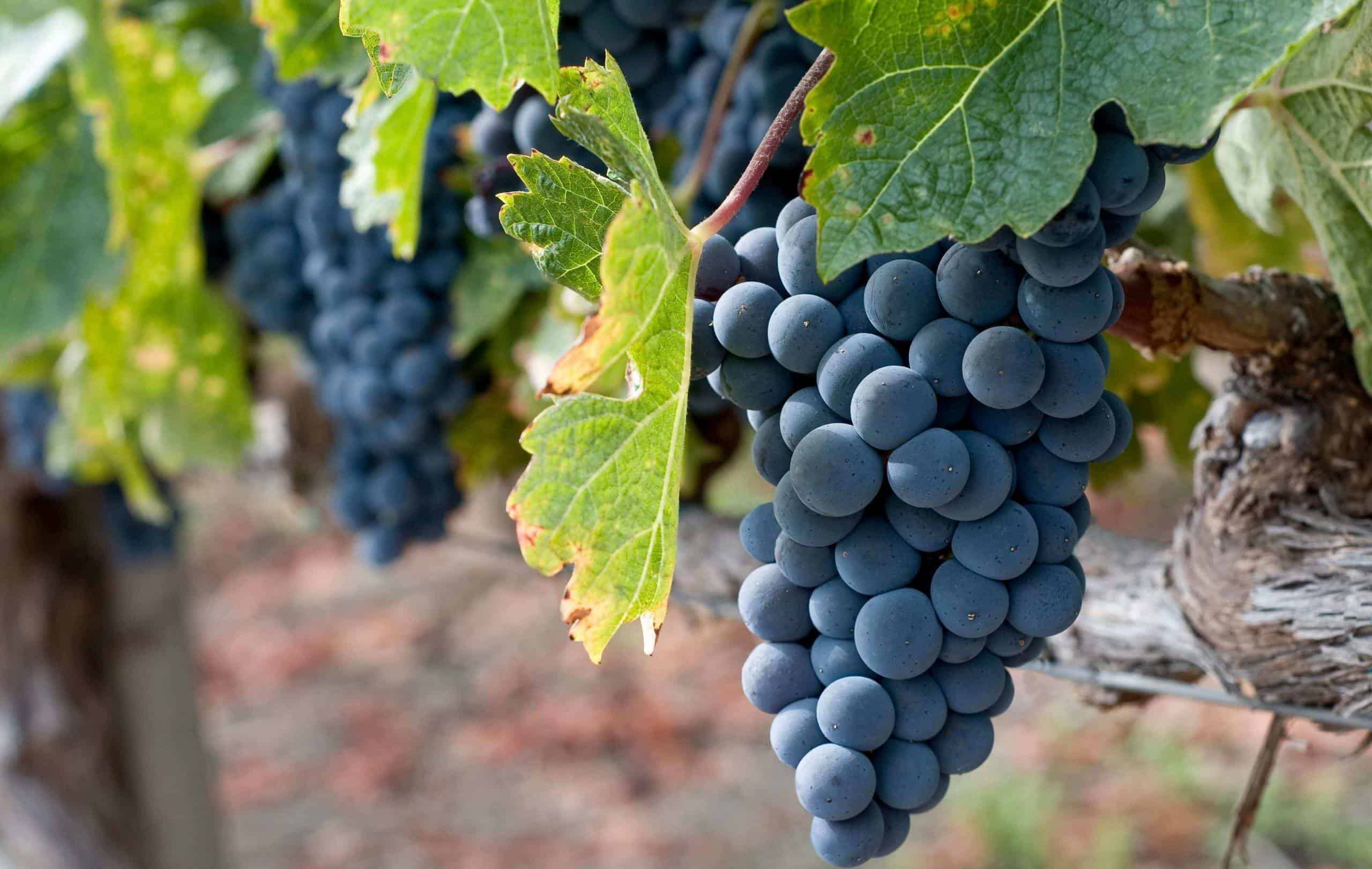
Introduction
Zinfandel is a black-skinned grape from Croatia that is used, throughout most of the world, to make robust red wine.
In the United States it is more popular when used to make White Zinfandel, a semi-sweet rosé.
The flavor of the wines produced depend greatly on the ripeness of the grapes and the climate in which they were grown.
Key Characteristics
Grape's Origin
While now found throughout the world’s wine regions, DNA and history show that the origin of the grape is Croatia.
It is often referred to as “Primitivo”, a grape that grows in the Apulia region of Italy and is its genetic twin.
Grape's Behavior
Zinfandel is a grape that cannot handle prolonged exposure to heat. It is often harvested early.
This gives it a high sugar content which translates into Zinfandels having a high to very high alcohol content.
Grapes on the same vine ripen at varied times. Some winemakers will harvest all at once and make wines with grapes at a variety of ripeness while others hand pick grapes to make sure that those used in a particular batch are of equal ripeness.
Some Zinfandels are left on the wine well past the typical harvest and used in dessert wines.
Zinfandel is another example of a grape that takes on terroir and style and allows it to be adapted into wines with a spectrum of characteristics.
Well drained sandy soil is the best growing soil for Zinfandel - drainage is fundamentally important to avoid bunch rot.
How Does it Look and Taste?
Zinfandel is a clear, light red. It offers a taste of jammed or candied fruit in the beginning.
Other fruit flavors can include cherry, plum, blueberry, blackberry and cranberry.
Spice notes include black pepper and licorice - these flavors come after the initial taste and last through the finish which can be smoky. High alcohol Zinfandels will have an oily mouthfeel.
Top Production Areas
Zinfandel is grown in Croatia, specifically in the Dalmatia region. It is also grown in the Apulia region of Italy and in California.
Recommended Food Pairings
Zinfandels are sweet so the key when pairing is spicy. Curries and barbecued meats pair best, but also light meats like quail and lamb. A straight spicy dish or one that is savory and spicy will pair beautifully.
If cooking at home, taste the wine for spice and then add what you taste to the sauce. Vegetarian curries work well, too, when the vegetables use have strong flavors: tomato, spiced apple, red pepper, caramelized or grilled onions.
For snacking, Zinfandel also pairs well with hard, richly flavored cheese like Manchego and Cheddar.What do the Experts Say?
"Deep purple and full of character, Zinfandel comes from a black-skinned grape that can favor raspberry and baking spice flavors from cooler regions, with spicy black pepper, blackberry and anise in warmer regions.
Also known as Primitivo in Italy, Zinfandel first came to California in the mid-19th Century and was popular during Prohibition, as its thick skins helped survive cross-country train rides to home wine makers in the East.
Thought once to be the same as the Croatian Plavic Mali ("What is Blue") DNA testing indicates Zinfandel is one of two parents to the Croatian favorite.
Produced in styles from a sweet Rose (White Zinfandel), to robust reds to Late Harvest, Zinfandel is revered and celebrated each year in San Francisco at the annual ZAP (Zinfandel Advocates and Producers) Festival and on National Zinfandel Day, the third Wednesday of November."

Here is good knowledge about Wines.
Thank you for the infos on grapes varieties.
Please, how do I get Semillom grape so as to plant it here in Nigeria for my wine production as an enterprenur in winery business?
Thank you and kind regards.
Perry
Quick question, are there just grapes of sauvinion, not cabenet or sauvinion blonk
I’m amazed, I must say. Rarely do I come across a blog that’s both equally educative and interesting, and let me tell you, you’ve
hit the nail on the head. The issue is something that too few
people are speaking intelligently about. I am very happy that I came across this during my
search for something concerning this.
A very informative site. Thank you very much.
One thing I would like to remark is that in my experience, La Mancha Tempranillo is not indistinct at all, but rather quite straightforward, at least when fermented in steel tanks, but, true enough, without much acid. The good thing is that it is such a hardy and widely spread variety that prices are usually lower than other varieties.
Just started growing five vines on an allottment in hereford England found this blog very interesting